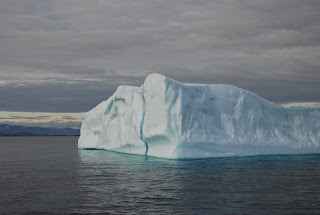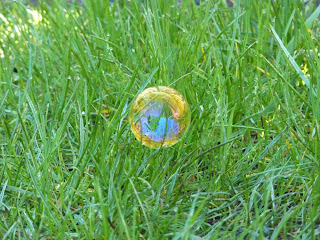 |
| an old drawing of a Loggerhead Sea Turtle |
In the waning tropical daylight, a uniformed park official sauntered over to me. “There are crocodiles in the water,” he told me. I was alone, studying the shallow, clear water of a slow-moving river near
Tamarindo, Costa Rica which flowed between me and a nature reserve. As soon as the words were out of his mouth, I changed my search from tropical fish to crocodiles. After examining every hiding spot in the water without seeing even a little crocodile, I concluded I was safe. The crocodile warning was likely to scare me out of wading across the river to avoid the reserve’s entrance fee.
The nature reserve protected a stretch of Pacific-facing sandy beach for
leatherback turtles to come ashore and lay their eggs. I happened to be in the exact area when sea turtles were coming ashore. That night, I joined a chaperoned sea turtle viewing expedition. After a short sunset boat ride (it wasn’t set up to be a difficult expedition), I relaxed on the sand watching the interplay between the moonlight and surf while Reserve staff patrolled the beach for turtles. Three hours after our arrival, a leatherback was spotted hauling herself out of the surf. We left her alone to choose her nest site.
That was the my first sea turtle encounter. On a tropical beach, turtles weren’t a surprise we expect turtles to be nesting there. The second time I encountered sea turtles was to pick up a dead Olive Ridley sea turtle that had paid the price for staying north too long.
In November 2011, an
Olive Ridley sea turtle washed ashore on
Wickaninnish Beach in the Pacific Rim National Park (
ref and
ref). Unfortunately, when a beachcomber spotted the turtle, she was in critical condition with a cracked shell. The Parks Canada folks whisked her off to the Vancouver Aquarium for care, but sadly she didn’t survive. A necropsy was performed to determine cause of death, tissues were taken and gut contents analyzed. After data were collected, the turtle was passed from the aquarium to the Department of Fisheries and Oceans. Her final destination was to be the Royal British Columbia Museum — this turtle is the first record of her species in British Columbia. In death, this turtle is destined to have an afterlife as the northernmost Olive Ridley specimen in the northeast Pacific.
Generally, our local waters are too cold for sea turtles and few wander this far north. McAlpine et al. (2004) describe sea turtles on our coast as “rare vagrants and uncommon seasonal residents.” However, they may be influenced by our warm summer temperatures (Stinson, 1984). Once here, they are free of predators. We have no record of anything eating a stray sea turtle.
Three species of sea turtles have been spotted in our waters: Green, Olive Ridley and Leatherbacks. As of 2004 (McAlpine et al.), there were 11 published reports of green turtles dating back to 1955, 14 published sightings for leatherback turtles dating back to 1932 and none for the Olive Ridley sea turtle. In a recent tracking study of ten Olive Ridley sea turtles, it was discovered they spent 90% of their time in waters with a sea surface temperature of 27 degrees Celsius (Polovina et al., 2004) — good luck finding that on the BC coast. However, a suspicion lingered that Olive Ridley turtles must pass by our coast as they have been spotted off the Washington coast and as far north as Alaska. Loggerhead turtles may eventually be spotted here, as they also have been seen in Alaska (Hodge and Wing, 2000).
In the fall as weather gets cooler, turtles that remain in northern waters risk getting sluggish, their digestion system shuts down and any food in their gut ferments. The added stress of cold waters make turtles susceptible to disease, infections from injuries, and in some cases, the turtles drown.
Green turtle carcasses found here in late fall tend to be large juveniles and small adults (McAlpine et al., 2002). Were they too inexperienced to know it was time to head south? Once these green turtle carcasses divulged their secrets, they get sent to local institutions to further scientific research and education.
Despite being critically endangered, leatherbacks are the most commonly spotted spotted sea turtle in BC waters (Matsuda et al., 2006). Sightings occur all along the coast, suggesting these turtles take advantage of warm sea surface temperatures between late summer and early fall (Spaven et al., 2009). As of 2009, there were 126 unique leatherback sightings recorded for BC (Spaven et al., 2009). Generally, “little is known of the occurrence and distribution of leatherback sea turtles in the waters of BC” (Spaven et al., 2009).
If you want to see a leatherback turtle’s shell, the
Royal British Columbia Museum has one on display in the marine room in the Natural History Gallery. Naming these turtles ‘leatherbacks’ is appropriate as their distinct shell is covered in skin, reminiscent of a dried leather coat.
In February, 2012, I accompanied
Gavin Hanke, the vertebrates curator at the Royal British Columbia Museum, on a trip to Nanimo’s Pacific Biological Station to pick up the Olive Ridley turtle that had been found on Wickanninsh Beach and transport it to the museum. At the Pacific Biological Station, the turtle was stored in a large walk-in freezer along with marine animals collected for scientific research. Even in the sub-zero air, the freezer stunk of stale fish. The aroma stuck to my clothes and stayed with me the rest of the day.
A large green garbage can barely contained the Olive Ridley turtle; its nose reached right up to the lid. The animal’s plastron and internal organs had been removed during the necropsy, so only the turtle’s head, limbs and carapace remained. Hollowed out, the turtle still seemed huge.
Eventually the turtle will be preserved and added to the museum’s collection. Behind the closed doors (to contain the smell) of the museum’s wet lab, the turtle will be soaked in formaldehyde; a process called ‘fixing’ that is akin to pickling. The formaldehyde links proteins within the turtle’s cells, to lock the animal in a ‘life-like’ look. The best way to determine if the fixing process is complete is to poke the specimen with your finger. If it feels rubbery it is done. For a turtle this size, the fixing process takes a few weeks.
Once the carcass is fixed, it is soaked in water to remove excess formaldehyde. Finally, the turtle will be stored in a vat (because it is too big for a bottle) of ethanol. Alcohol is easier to work with than formaldehyde. Over the long term, ethanol keeps bacteria and fungi at bay. Future researches will not be able to perform any DNA analysis since the formaldehyde was used to fix the turtle.
Thinking back to Costa Rica, once she had excavated a pit in the sand, we approached with only the dimmest lights to watch the leatherback turtle lay her eggs. The guides assured us that we weren’t bothering her, which I didn’t believe as they needed our entrance fee to fund the nature reserve. Even in the dim light, the turtle’s eggs were brilliant white and there were lots of them. Each one was a perfect sphere. I was curious what they felt like — a curiosity that remained unsatisfied.
When she was finished, the leatherback used her back legs to slowly sweep sand over her eggs. She never looked at what she was doing, but still buried the eggs perfectly. Once done, she hauled herself with her massive flippers/front legs back to the ocean leaving a trench in the sand behind her. We quietly backed away as her form became a dark mass surrounded by sparkly surf.
Further on, a newly hatched leatherback was making its way toward the water across our path. I picked it up. It was floppy and wiggly like newborns often are, and its front legs dwarfed the rest of its body. The size difference between this tiny turtle that fit into my hand and its gargantuan mother was stunning. Since a lot of us were on the beach that night, I took the turtle to the water rather than let it run the risk of being stepped on by another tourist. It fought the gentle surf, then it slipped under the surface and vanished from sight. Would it some day tour past the BC coast? Would it beat the odds and return to the beach to lay its own batch of eggs?
In the darkness, I also headed to sea. A boat took me back to the outskirts of Tamarindo, and my hotel. This time, I didn’t stop to check the water for crocodiles.
references
Polovina, J.J., G.H. Balazs, E.A. Howell, D.M. Parker, M.P. Seki and P.H. Dutton. 2004. Forage and migration habitat of loggerhead (
Caretta caretta) and olive ridley (
Lepidochelys olivacea) sea turtles in the central North Pacific Ocean.
Fisheries Oceanography, 13:1, 36-51.
McAlpine, D.F., S.A. Orchard, and K.A. Sendall. 2002. Recent Occurrences of the Green Turtle from British Columbia Waters.
Northwest Science, 76, No 2, 185-188.
McAlpine, D.F., S.A. Orchard, K.A. Sendall and R. Palm. 2004. Status of Marine Turtles in British Columbia Waters: A Reassessment.
The Canadian Field-Naturalist. 118. 72-76.
Matsuda., B.M., D.M. Green and P.T. Gregory. 2006.
Amphibians and Reptiles of British Columbia. Royal BC Museum, Victoria, Canada, 266pp.
Spaven, L.D., Ford, J.K.B, and Sbrocchi, C. 2009. Occurrence of leatherback sea turtles (Dermochelys coriacea) off the Pacific coast of Canada, 1931-2009.
Canadian Technical Report of Fisheries and Aquatic Sciences. 2858: vi + 32 p.
Stinson, M. L. 1984.
Biology of sea turtles in San Diego Bay, California and in the northeastern Pacific Ocean. MSc. thesis, San Diego State University, California.
Hodge, R. P., and B. L. Wing. 2000. Occurrences of marine turtles in Alaska waters 1960-1998.
Herpetological Review. 31: 148-151.
Image is from here.
























